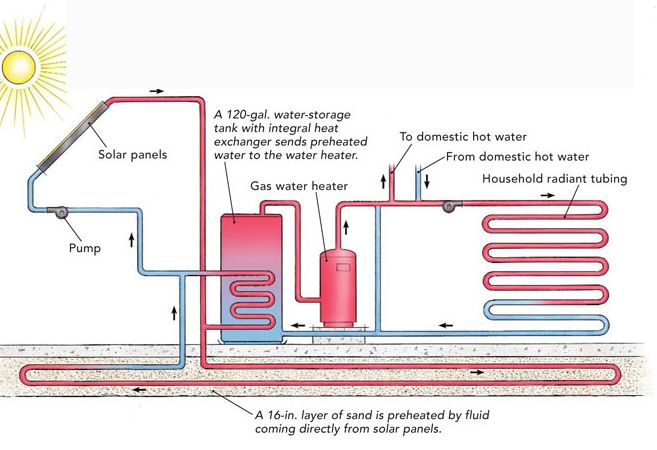
The idea of using a bed of sand under a concrete slab as a heat sink has been broached before, and John Klingel is wondering how, exactly, he should install PEX tubing to get the greatest possible benefit from the system. He poses that question in the GreenBuildingAdvisor Q&A forum.
More from greenbuildingadvisor.com
Podcast: How Heat Moves Through Houses
Podcast: Solar Thermal: Types, Cost, and Investment Advice
Can Heat Be Stored in a Sand Bed Beneath the House?
This isn’t the first time the idea has been broached, but the conversation in this Q&A Spotlight draws on the experience of someone who’s successfully used sand as insulated thermal mass to passively heat his home. The approach is not only relatively inexpensive, he says, but very effective, essentially allowing him to walk away from the house in 40-below weather without worrying that anything will freeze.
Still, skeptics doubt it can work as an active heating system, and wonder whether the cost of heating the sand to useful temperatures is really worth the trouble.
Read the whole article at Green Building Advisor.
Fine Homebuilding Recommended Products
Fine Homebuilding receives a commission for items purchased through links on this site, including Amazon Associates and other affiliate advertising programs.

Affordable IR Camera

Handy Heat Gun

8067 All-Weather Flashing Tape

Pumping solar-heated fluid through tubing embedded in sand. GBA experts ponder whether the heat gained from all this solar thermal equipment is worth the investment























View Comments
seems like this is a concept relating to potential energy. Very cool
Benjamin Marcus Raucher
While a good idea for solar energy storage, each person's home is going to need a slightly different solution give nthe nature of their homes and foundations right? Better to have an expert consult and verify your ideas before you go about installing anything!
Nice diagram to inspire creativity. So the first question is at the point in the solar panel circuit where the water has to decide whether to go into the ground loop ot the 120 gallon tank loop. "How do it do that?" Obviously....... You put a thousand dollar control system in and pray every night that it doesn't get toasted by a power surge or a lightning striks or some little electronic glitch that is impossible to fix. Maybe some kind of 3 way manual valve and a thermometer or two in the pipes would be a good backup.
BTW, I kinda like the idea of a solar panel to power the pump in that loop. It just quits pumping when the Sun goes to sleep or hides behind the clouds. EdW